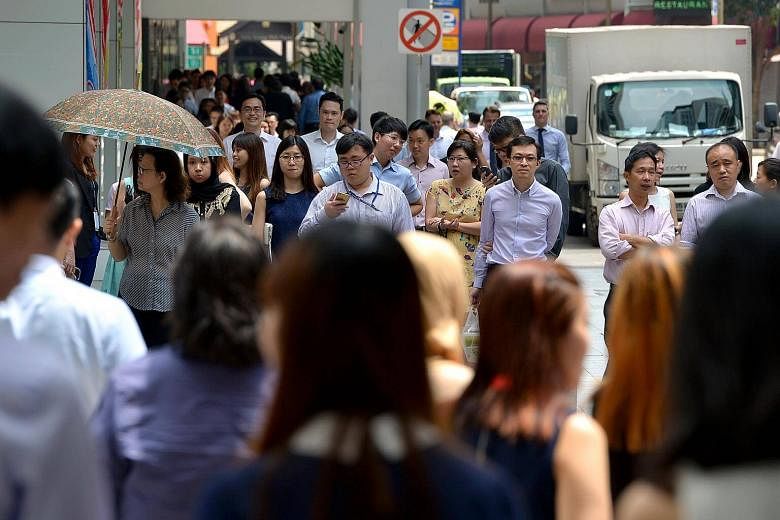SINGAPORE - The labour market added 10,700 local employed people last year (2016), an increase of 0.5 per cent compared to flat growth the year before.
However, the annual average unemployment rate for Singaporeans and permanent residents last year -while still low - rose to its highest level since 2010, and the number of layoffs hit a seven-year high.
Overall employment growth dipped, in part because the foreign workforce, excluding domestic workers, had contracted by 2,500 people or 0.2 per cent - the first year it fell since 2009.
The total workforce grew by just 16,400, including domestic workers, amid slower economic growth last year.
At 0.4 per cent, this is the slowest employment growth since 2003, when employment fell by 12,900, according to the Manpower Ministry's latest preliminary data released on Thursday (Jan 26).
"The weaker and more uncertain economic environment in 2016 has presented a challenge to sustain growth and stem a rise in unemployment," said the ministry in a statement.
Despite the fourth quarter year-end festivities, hiring was muted at just 1,900, down from 16,100 in the fourth quarter of 2015.
This brought total employment to 3,672,600 in December last year.
More people were laid off last year compared with the year before, across all three sectors, due to restructuring and a slower economy, said the ministry.
A total of 19,000 people were retrenched or had their contracts aborted, the highest number since the global financial crisis in 2009. Retrenchments alone hit 16,600.
While still low, the annual average unemployment rate for Singaporeans and permanent residents last year rose to its highest level since 2010, at 3 per cent, compared with 2.8 per cent in the year before.
The average rate for citizens was 3.1 per cent, while the overall rate was 2.1 per cent.
As the demand for labour no longer overwhelmed supply, income growth slowed.
The median income including employer contributions to the Central Provident Fund grew last year by 0.7 per cent for full-time Singaporeans, to $3,823. After taking negative inflation into account, the real median income growth was 1.3 per cent.
This is a significant slowdown from the real growth of 7 per cent in 2015.
Over the past five years, real income growth at the 20th percentile kept pace with that at the median, at an annual average of 3.2 per cent and 3.1 per cent respectively.
"As we transform our industries to create better jobs for Singaporeans at all levels, MOM and Workforce Singapore will step up efforts with tripartite partners to help workers to seize new job opportunities through the various employment and career support programmes under SkillsFuture and Adapt and Grow initiatives," said the ministry.


